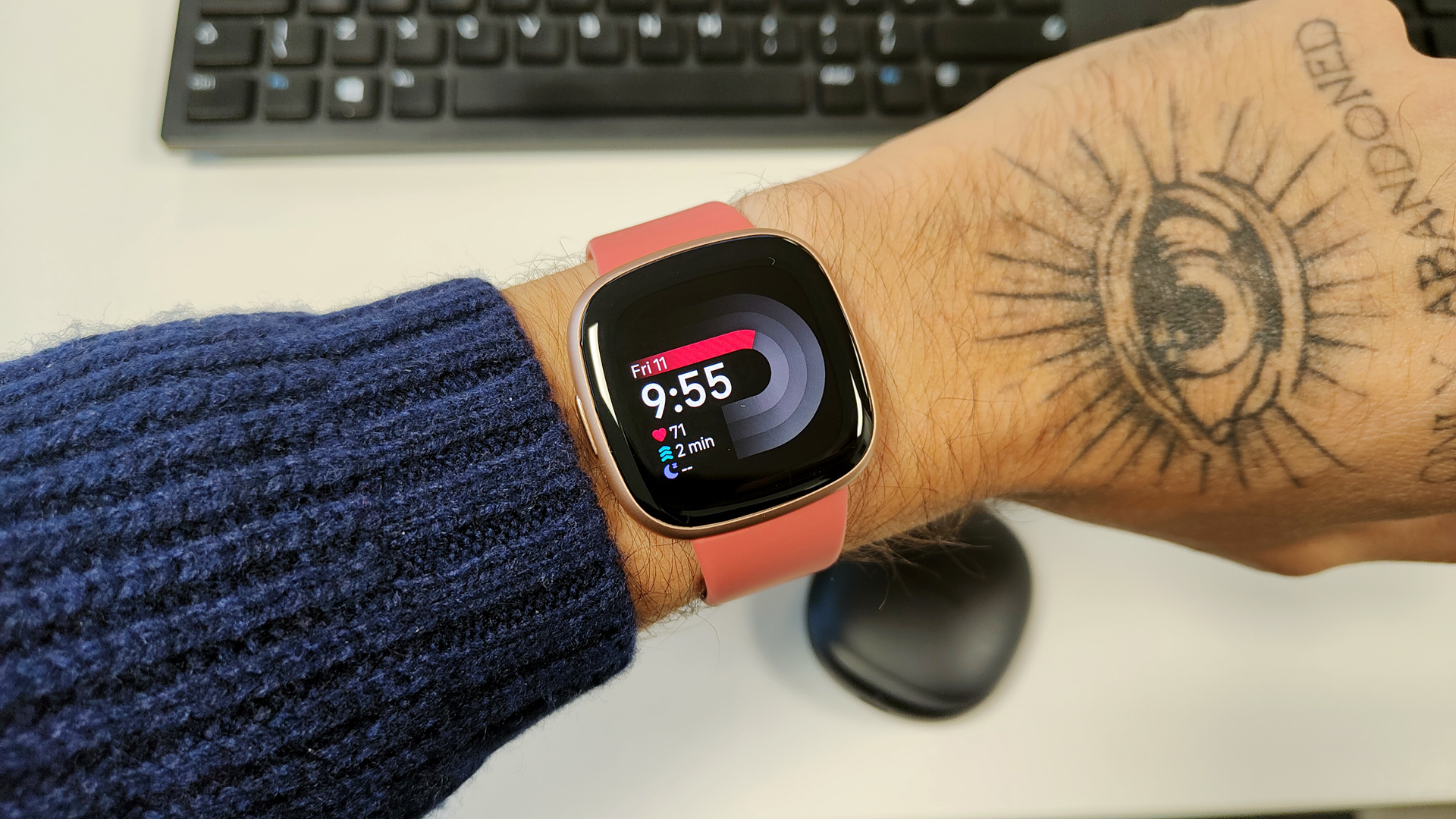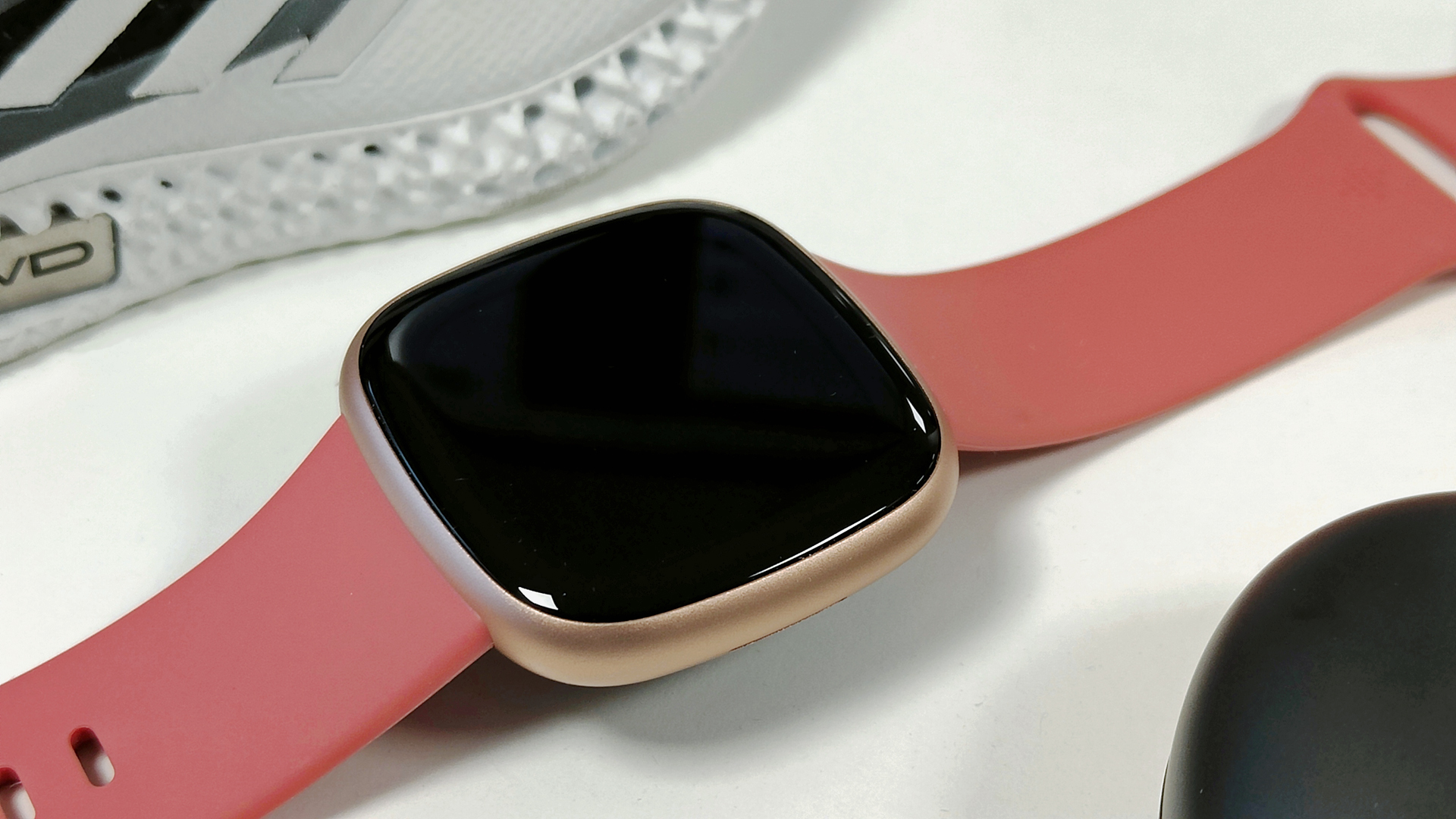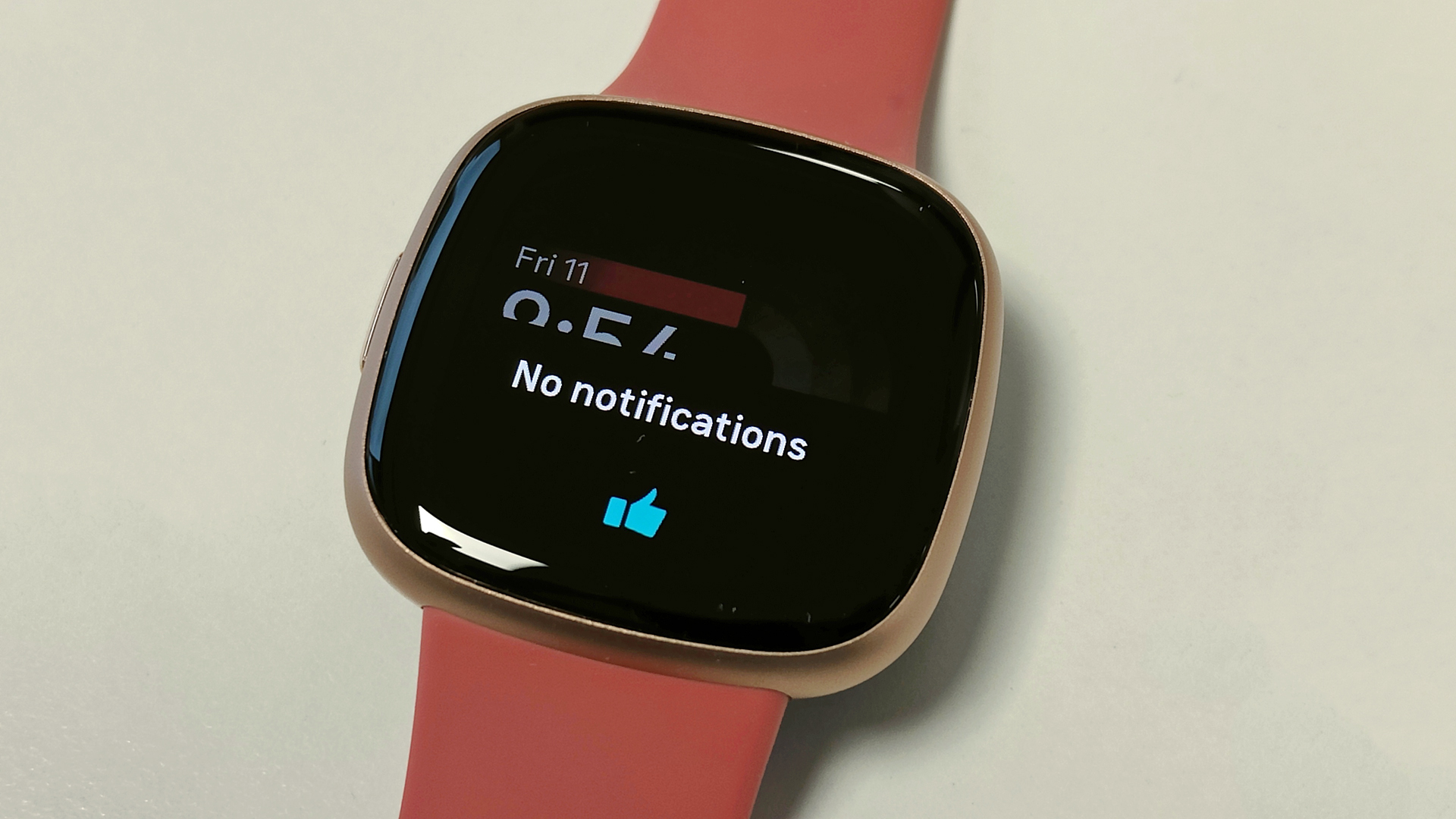Fitbit Versa 4 review: a fitness-forward smartwatch that makes little sense
Fitbit tried to turn the Versa 4 into a full-fledged fitness smartwatch with little success

On paper, the Fitbit Versa 4 is the best Fitbit for people who like to exercise. It has 40+ exercise modes, a multi-path heart rate sensor, a built-in GPS, and a slew of fitness features. In reality, it's little more than a Sense 2 Lite with no WiFi, no third-party app support, and other missing features. It's a decent smartwatch, though, especially if you find a good deal.
-
+
Physical button makes it easier to operate the watch
-
+
Updated interface is more user friendly
-
+
40+ sports modes
-
-
No third-party app support
-
-
No WiFi
-
-
Heart rate tracking accuracy issues
Why you can trust T3

I was excited to try the Fitbit Versa 4 when it was announced. Finally, a dedicated fitness Fitbit smartwatch! And although there had been other Fitbits in the past with a more sporty profile – the Ionic – I was glad Fitbit finally found a place for the Versa franchise in its lineup, especially after the Sense was launched. People don't have to be confused anymore: the Sense is for health tracking, while the Versa is for fitness tracking. Perfect.
Then the bad news started coming. Neither the Fitbit Sense 2 nor the Versa 4 have WiFi, so you can't store or control music from your wrist. They don't support third-party apps. They lack certain features on launch. The Versa 4 has issues with heart rate tracking. I was devastated but curious to find out if the Fitbit Versa 4, despite its challenges, is worthy to be included among the best Fitbits. Is it better than the Fitbit Versa 3?
With a heavy heart, I strapped the Fitbit on my wrist and started testing. After a couple of weeks, I can confirm the smartwatch is, in fact, a mixed bag, as while it retains some of the charms of its predecessor, it also loses some essential features and fails to deliver in the fitness department. Should you get one anyway? Let's find out.
Price and availability
The Fitbit Versa 4 was announced in August 2022 and is available to buy now directly from Fitbit US, Fitbit UK and Fitbit AU for a recommended retail price of $230/£200/AU$380. The Fitbit Versa 4 currently comes in three colourways: Black / Graphite Aluminium, Waterfall Blue/ Platinum Aluminium, Pink Sand/ Copper Rose Aluminium, and Beet Juice/ Copper Rose Aluminium.
The Fitbit Versa 3 is available much cheaper nowadays, not the mention the Fitbit Versa 2, which seems to be in high demand still, years after its release. The latter can be bought for less than half the RRP of the watch, which is pretty cheap. However, the Versa 2 is a considerably 'dumber' smartwatch than even the Fitbit Versa 3, although, for the price, it's not a terrible idea to buy one. Check out the latest discounts in our best Fitbit deals roundup article.

What’s new on the Fitbit Versa 4?
In-depth: Fitbit Versa 3 vs Versa 4 – Which is the better smartwatch?
Usually, this is the section of the review where I talk about what new features have been added to the latest iteration of the product. But here, I'm going to be talking about what features the Fitbit Versa 4 has lost compared to its predecessor.
Get all the latest news, reviews, deals and buying guides on gorgeous tech, home and active products from the T3 experts
I'm going to start with what I think is the strangest exclusion, especially considering Fitbit's Google acquisition a few years back: the Versa 4 doesn't support Google Assistant, only Amazon Alexa. I'm completely befuddled; how can Fitbit keep Alexa and ditch Google's Assistant? Maybe there is some contractual obligation to have Alexa on board; I'm not sure.
Features not available at the moment, although will be in the future, are on-wrist Bluetooth calls, Google Maps and Google Wallet. This reminds me of the Fitbit Charge 5 launch, which didn't have a bunch of essential features when it was released. Speaking of the Charge 5: even that has an ECG sensor, unlike the Versa 4, although the Versa line never had a sensor that can measure that, so, technically, the new watch hasn't lost this feature.
Probably the biggest loss is the WiFi, which is completely unexplainable. What's the benefit of disabling WiFi (there is a WiFi chip on board, but it's permanently turned off)? Extended battery life? The Fitbit Versa 4 has the same battery life as its predecessor. At the same time, we lose out on the fast smartphone connection. Worse still, there is now no third-party app support. Sad times indeed.
The few things that have been added/updated include the physical push button – this is a nice upgrade, at least – and the new user interface, which is similar to the Sense 2 and the Pixel Watch.

Fitbit Versa 4 build quality
The Fitbit Versa 4 looks almost identical to the Versa 3, apart from the physical button that replaces the capacitive button found on the predecessor. It has a lightweight body made with aluminium (bezel) and polycarbonate (case back), a decent-sized AMOLED screen, and a silicone Infinity Loop band. Stats such as display resolution/size and lens material aren't available on the website, sadly. The Fitbit Versa 4 is water-rated to 50 metres (5 ATM).
The watch feels good on the wrist, and I didn't mind wearing it all day and night when I tested it. The rounded corners and the soft colour of the band/watch land a bit of class to the Versa 4; it's by no means as classy as the Withings Scanwatch Horizon or the Montblanc Summit 3, but the Fitbit Versa 4 is much cheaper than those. It's quality enough for the price and instantly recognisable as a Fitbit.

User interface
The new user interface of the Fitbit Versa 4 is easy to use and understand. From the main watch face, swiping left or right lets you see the tiles with all the different stats; swiping up reveals the notifications, and swiping down grants access to the quick-access menu. The tiles are (from left to right) Steps taken, Today's summary, Heart rate, Sleep, Timer, Exercise, and Weather.
Pressing the button from any of the tiles will take you back to the watch face. Pressing the button here (on the watch face) pulls up the main menu. In the button menu, you'll find the Alarms, Amazon Alexa, Fitbit Pay, Relax (breathing timer), and other features also available on the tiles, such as Exercise, Weather etc. It's all pretty straightforward, especially if you have used Fitbits before.

Fitbit Versa 4 features
From a features point of view, the Fitbit Versa 4 is more or less the same as its predecessor (minus the excluded features mentioned above. However, the new Versa has a ‘multi-path’ optical heart rate sensor that can measure oxygen saturation (SpO2), skin temperature variation (variation only; only visible in the Fitbit app), and it also has a built-in GPS.
As for smart features, the Fitbit Versa 4 has a built-in speaker and microphone, NFC, so you can use the watch to pay for things in the shops (via Fitbit Pay); it can automatically track workouts and monitor sleep. You also get Amazon Alexa support (hence the inclusion of the microphone and speaker), alarms, timers and smart notifications. It's not a bad mix of smart features, although you miss out on some key features many people like to have on their Fitbits, such as music playback and the like.

Activity tracking
The Versa 4 is Fitbit's best workout watch and comes with over 40 sports modes included on the wearable, which includes the most popular ones (e.g. walking, running, cycling, swimming, etc.) and some less-popular but nice to have modes like core training, dancing, kayaking, paddle boarding, and so on.
There are a few problems with the Fitbit Versa 4 being a sporty smartwatch. First, the sensor and the algorithm are the same as in other Fitbit wearables and are tailored to track everyday activities and sleep, not sports. The algo will smooth out spikes in heart rate, thinking it was an anomaly caused by the watch not sitting properly on your wrist, which is great when that actually happens, but not so much when you do HIIT workouts or interval training.
Another issue is the general accuracy of the multi-path sensor. Resting heart rate is reported higher than what it is, which skews all other readings, too. It's all fine, or, more like, it would all fine if the Fitbit Versa 4 wasn't advertised and an exerciser's best friend. I was happy to overlook GPS and heart rate sensor issues in the Fitbit Charge 5; after all, it's 'only' a fitness tracker. But the Fitbit Versa 4 should do better, as it's a smartwatch and should have more processing power and features, enabling it to assess athletic performance better.
If you're planning on using the Versa 4 as a fitness-forward smartwatch, as opposed to a performance wearable, you won't be disappointed. The automatic workout recognition works well – as expected from a Fitbit – and the Active Zone Minutes system Fitbit uses is one of the best for keeping track of any activity that counts toward your weekly 150-minutes of vigorous activity recommended by the WHO.

Fitbit Versa 4 battery life
Officially, the Fitbit Versa 4 has a "6+ days battery life", the same as the Sense 2, which is way better than that of the Pixel Watch and even the best Apple Watch (at least the one with the most battery power), the Apple Watch Ultra. In practice, the watch will easily last for three or four days if you're not too keen on looking at the screen too often.
Even if you prefer to check every email/WhatsApp message/weather update on your Fitbit Versa 4 as soon as they appear and track runs/cycles using the GPS, you can probably get two days out of the battery. The only strange thing about this – and I know I keep on going on about this – is that even though there is now no WiFi, the Versa 4 has the same battery life as its predecessor. A real mystery.
Should I buy a Fitbit Versa 4?
I'm not angry at you, Versa 4; I'm angry with you. You were supposed to be the one to sort out the confusion over which Fitbit smartwatch does what. When the original Sense and Versa 3 were launched, we all scratched our heads, thinking, 'is the Versa 3 the Sense Lite?' and, 'What's the difference, apart from the asking price?'.
When the Sense 2 and the Versa 4 were announced, and we were told that the Sense was a health watch and the Versa 4 a fitness watch, all of a sudden, everything made sense (sorry for the pun). Fitbit set a clear path for its smartwatches, and I was happy it did.
In real life, the Fitbit Versa 4 is more Sense 2 Lite than a sportier version of the Versa 3. Yes, there are plenty of sports modes available on the watch, but other than that, it's 'just' the same as the Sense 2 but with fewer sensors and features. It even looks the same. There is nothing unique about the Versa 4, which is why I'm so upset with it. I want the Versa franchise to be good.
I want it to be a sporty smartwatch, one that can take on even some Garmin watches (maybe the Garmin Forerunner 55 or the Garmin Venu 2). At present, it can't, which makes me sad. Fitbit is a well-established brand with a strong community – I hope Google won't let it wilt away just to launch new Google wearables. Right now, I'm concerned, but I also look forward to seeing the Fitbit Versa 5. As for the Versa 4... I might sit this one out for now.
Also consider
If you need a cheaper Fitbit wearable to track your activities passively, try the Fitbit Inspire 3. It's a lively fitness tracker with a colour touchscreen display and updated sensors that track heart rate variability, sleep, and changes in skin temperature, on top of other metrics most fitness trackers should be able to monitor nowadays, such as heart rate, steps, calories burned and more. Read my full Fitbit Inspire 3 review.
Or you can check out the Samsung Galaxy Watch Active 2, which used to be one of the best alternatives to an Apple Watch when it was released, and is an excellent choice for Android users or anyone looking for a feature-rich, fitness-focused smartwatch bursting with great health features. Read our full Samsung Galaxy Watch Active 2 review.

Matt Kollat is a journalist and content creator who works for T3.com and its magazine counterpart as an Active Editor. His areas of expertise include wearables, drones, fitness equipment, nutrition and outdoor gear. He joined T3 in 2019. His byline appears in several publications, including Techradar and Fit&Well, and more. Matt also collaborated with other content creators (e.g. Garage Gym Reviews) and judged many awards, such as the European Specialist Sports Nutrition Alliance's ESSNawards. When he isn't working out, running or cycling, you'll find him roaming the countryside and trying out new podcasting and content creation equipment.